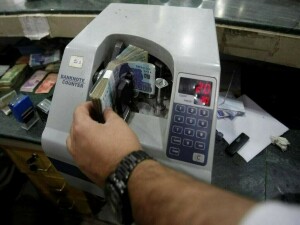Editorial: Addressing Inflation and Economic Challenges
Following his attendance at the ‘Made in Gujranwala Exhibition’ organized by the Gujranwala Chamber of Commerce and Industry, Finance Minister Muhammad Aurangzeb acknowledged that the populace has not yet reaped the benefits of the remarkably low inflation rate. The Sensitive Price Index for the week ending April 10, 2025, showed a decline of 0.83 percent week-on-week and 2.81 percent year-on-year, while the March Consumer Price Index (CPI) was recorded at a low of 0.7 percent.
Data from the Pakistan Bureau of Statistics (PBS) reveals significant decreases in the prices of essential food items, including tomatoes (12.82 percent), garlic (14.73 percent), onions (11.40 percent), wheat flour, and eggs (7.40 percent). Additionally, there were notable declines in the prices of petrol (11.89 percent) and diesel (8.29 percent).
The majority of food and non-food items experienced modest increases (less than 1 percent for all except pulse gram at 1.63 percent), with LPG at 0.64 percent, long cloth at 0.54 percent, and cigarettes at 0.06 percent.
Sugar, a commodity heavily influenced by elite manufacturers, saw a substantial week-on-week price increase of 16.21 percent, as did vegetable ghee. Concerns persist that inflation rate data might be manipulated for political purposes. A report from October 2024 indicated that the IMF would assist the government in aligning inflation expectation surveys with optimal practices, noting ongoing deficiencies in the source data available for sectors representing about a third of GDP, along with issues in the granularity and reliability of Government Finance Statistics.
Despite the drop in CPI from 4.1 percent in December 2024 to 0.7 percent in March, the Monetary Policy Committee, which convened on March 10, 2025, anticipates inflation to gradually rise and stabilize within the target range of 5-7 percent.
This forecast remains vulnerable to risks, including fluctuations in food prices, the timing and extent of energy price adjustments, additional revenue measures, protectionist policies in major economies, and uncertainties in global commodity prices, underscoring the need for vigilance.
Aurangzeb is commended for admitting that the advantages of a low inflation rate have not yet reached consumers and has promised to provide relief to the salaried class and further reduce power rates.
Economists contend that reducing taxes on the salaried class while continuing to depend on indirect taxes—which disproportionately affect the poor—will have a limited impact unless significant reforms are enacted. These reforms should focus on expanding the tax base and avoiding taxing those already taxed, a practice prevalent in the past and in the current budget. Approximately 75 to 80 percent of direct tax collections come from withholding taxes imposed in the sales tax mode.
According to the IMF’s October 2024 report on Pakistan’s request for an Extended Fund Facility program, there are three key issues in major economic sectors:
- Government price setting and procurement operations have rendered the agricultural sector unresponsive to consumer preferences, aggravated price stability and hoarding, reduced incentives for innovation, misallocated resources, and burdened fiscal sustainability. These interventions should be discontinued.
- Despite significant productivity differences across sectors, particularly between agriculture and non-agriculture, resources have not shifted from less to more productive areas. Pakistan has seen one of the smallest declines in agricultural employment among emerging market and developing countries (EMDCs) since 1990.
- Low investment, protectionism, and weak competition have undermined innovation in production, resulting in declining economic complexity and hindering the transition to more complex goods related to Pakistan’s current products.
The implementation of necessary electricity and gas tariff adjustments is a positive step that must continue. Addressing the energy sector’s challenges and restoring its viability requires reforms to enhance distribution and transmission efficiencies and lower generation costs, which will ultimately allow for tariff reductions. The government’s projection of financial gains from renegotiated IPP contracts anticipates future outflows, and the recent price decline is due to lower fuel costs, rather than passing on the decrease in international petrol prices to consumers in mid-March 2025. Instead, electricity rates were reduced across the board.
Authorities are likely hoping that lower rates will incentivize exporters. However, this assumption faces challenges due to US tariffs and the fact that electricity rates are still nearly double those of regional competitors. The IMF proposes a medium-term transition toward cash programs for energy support.
PBS data indicates that individuals with incomes between 17,732 rupees per month (below the minimum wage of 37,500 rupees) and 29,517 rupees per month experienced an average inflation rate of over negative 3.26 percent, while those with higher incomes faced an average of slightly more than negative 2.5 percent.
While the current IMF program limits the authorities’ ability to implement domestic policies, there is room to create leverage by reducing current expenditure, rather than increasing it by 21 percent as in the current year. This would enable the government to make the politically challenging decision to broaden the tax base in a phased manner, instead of simply agreeing to raise the tax revenue target by 2 to 3 trillion rupees, as suggested by the IMF staff.



Comments (0)
No comments yet. Be the first to comment!
Leave a Comment